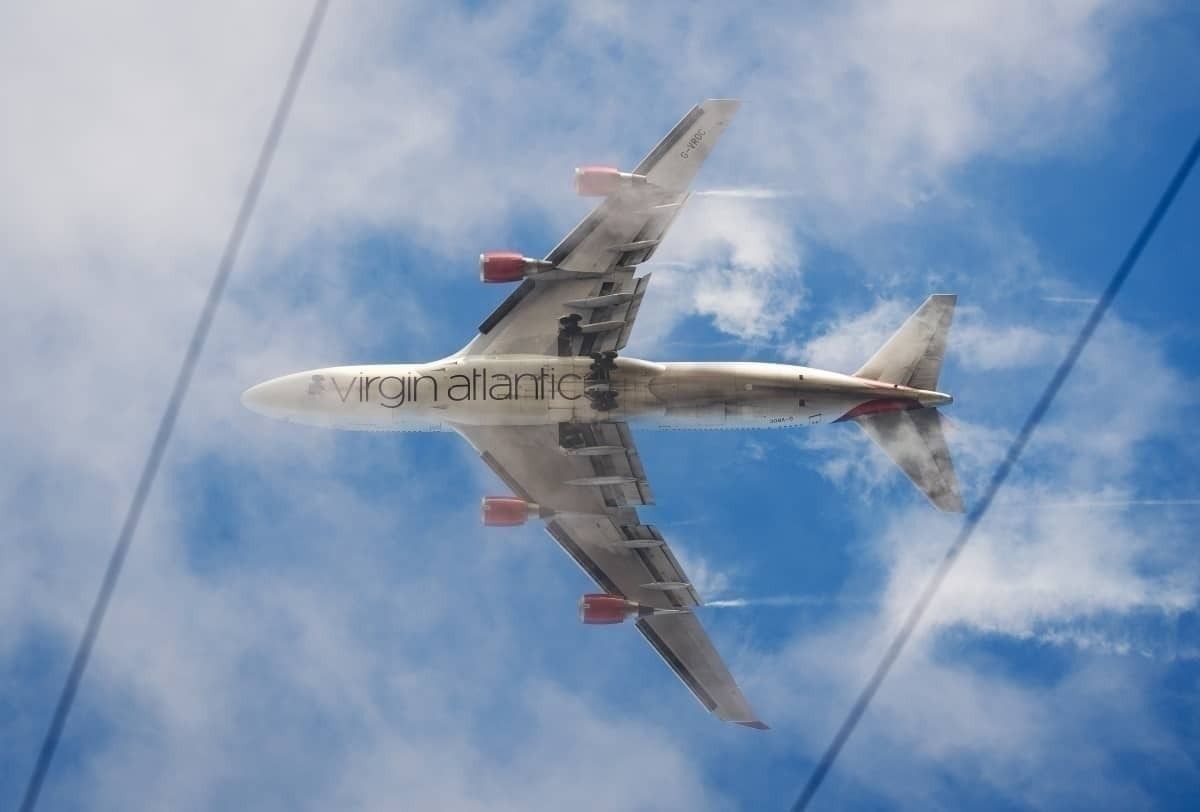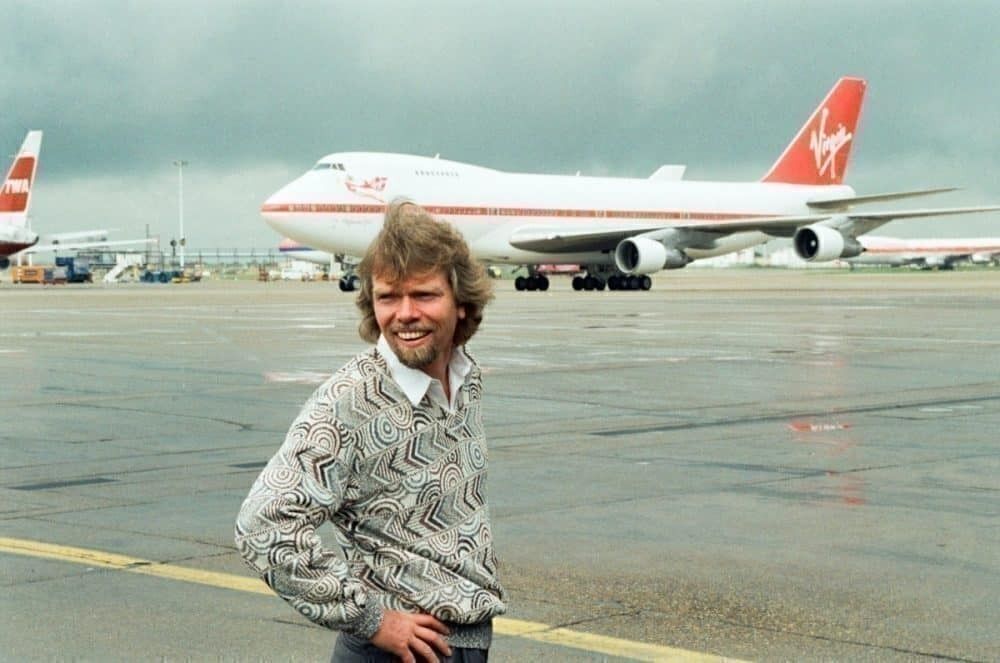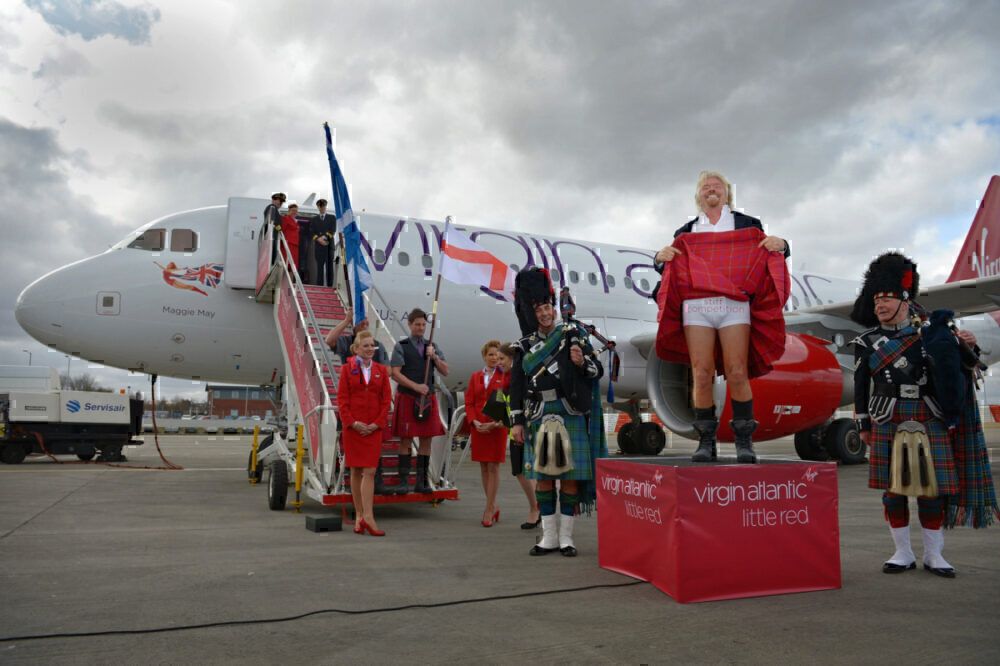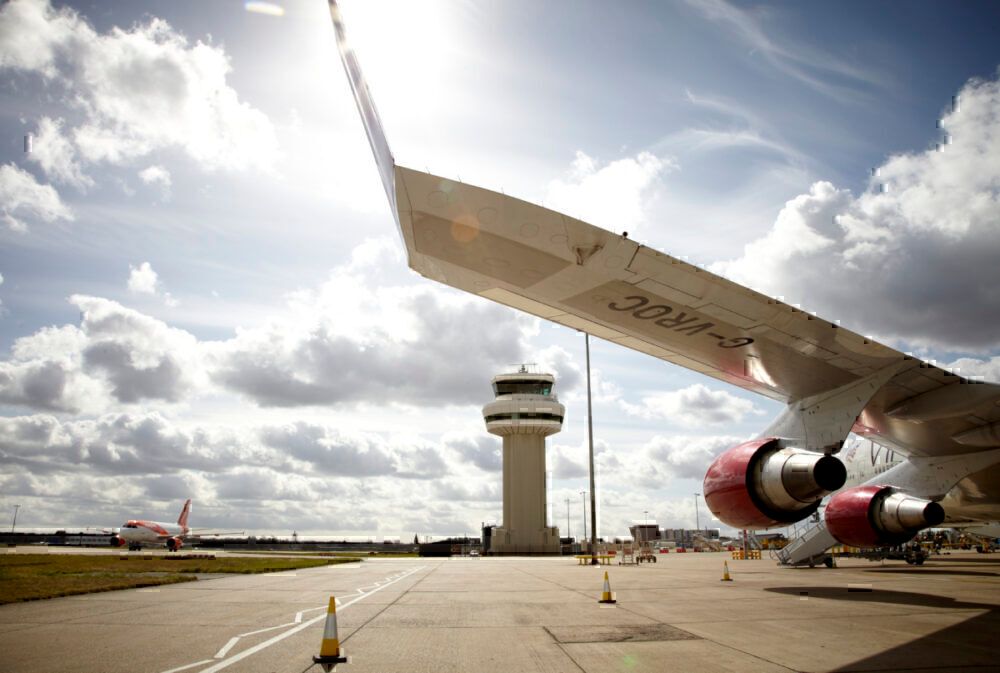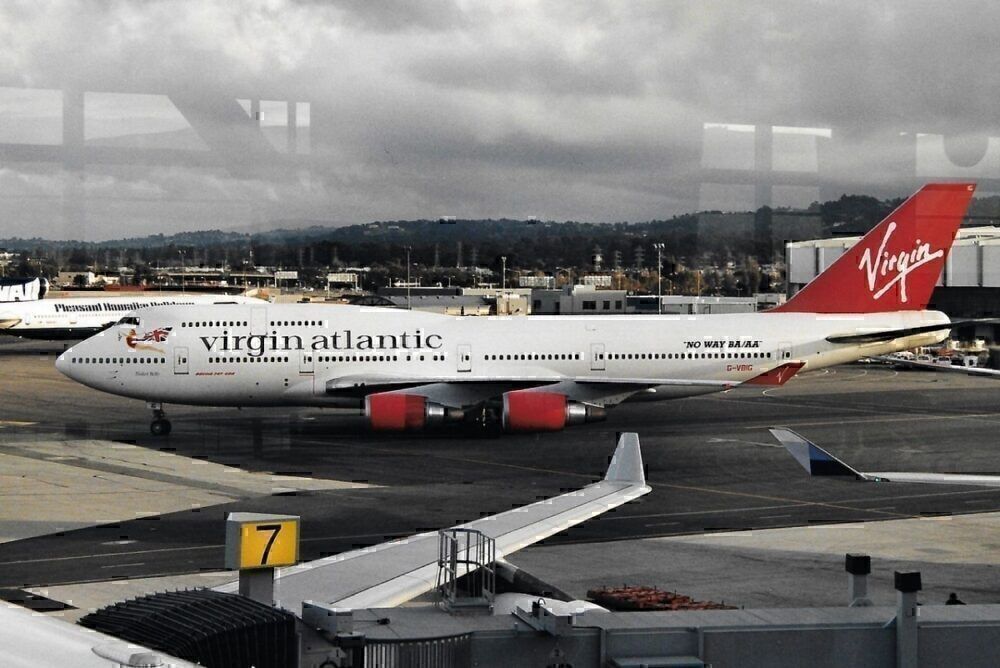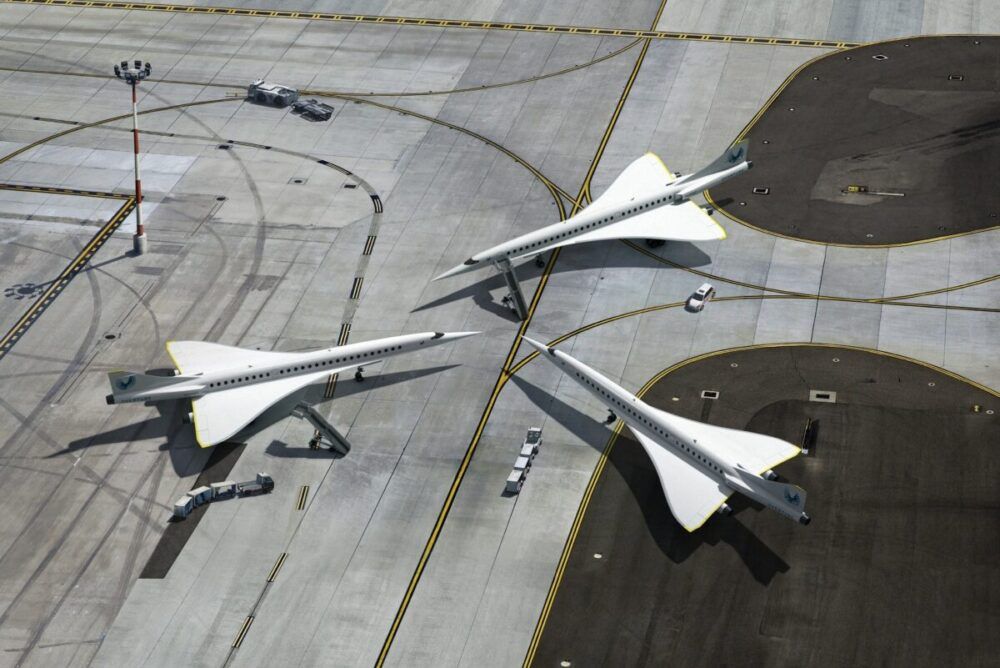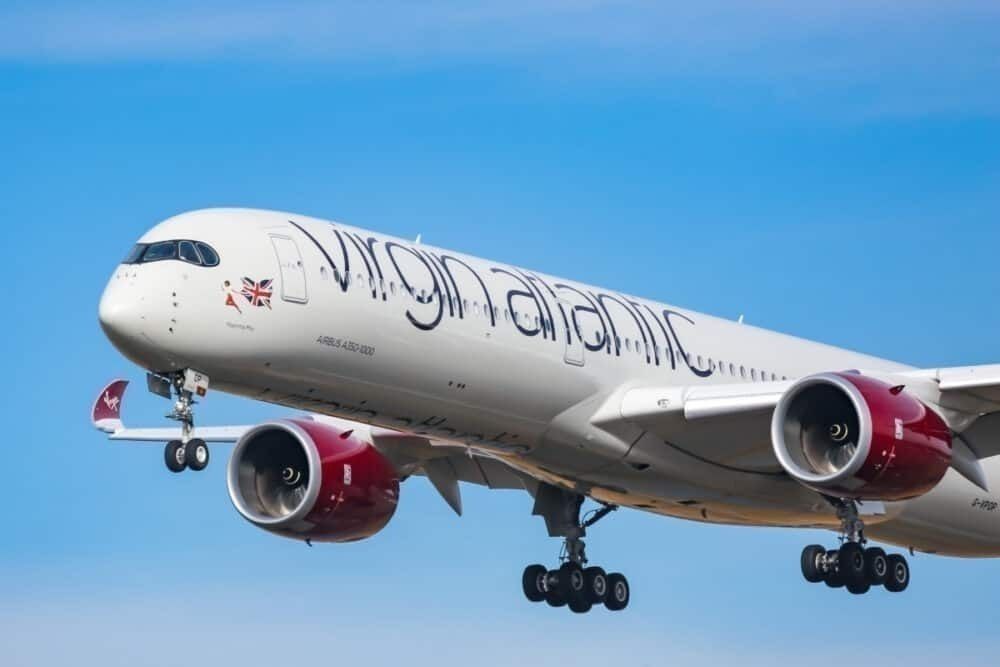Yesterday, Virgin Atlantic celebrated its 36th birthday. However, 36 is likely to be one birthday that the airline won't want to remember for years to come. Virgin Atlantic's entire scheduled passenger operation has been grounded for around three months now.
On June 22nd, 1984, Richard Branson's airline operated its first flight. The airline's first aircraft, a Boeing 747 named 'Maiden Voyager,' flew from London Gatwick Airport to New York's Newark Airport.
However, since then, much has changed in the airline. Indeed, the current crisis has prompted us to say goodbye to two icons of Virgin Atlantic's past. Let's find out more.
Stay informed: Sign up for our daily aviation news digest.
A first aircraft
As mentioned, Virgin's first aircraft was a Boeing 747. Virgin took delivery of the plane in January of 1984, becoming its second operator. The aircraft had been operated since new by Aerolineas Argentinas until two years prior. The aircraft, G-VIRG, was just over eight years old when Virgin took delivery of it.
Following several years in service, it was finally sold on to Nigeria's Kabo Air in December of 2001. Despite being the first aircraft type flown by Virgin, the Boeing 747 is sadly no longer a part of the airline's fleet. Due to retire in the coming years, Virgin decided to withdraw all its remaining 747s immediately while it was grounded.
Short-haul never worked out
Virgin Atlantic has now dipped its hands into the short-haul market twice in the years since it was founded. The airline's first attempt was with an airline called Little Red. The short-haul subsidiary started flying in 2013. However, just two years later, it ceased operations. The airline operated A320 family aircraft in Virgin's usual livery to three UK destinations out of London. These were Aberdeen, Edinburgh, and Manchester.
More recently, Virgin attempted to get back into the short-haul market by purchasing a stake in Flybe. The UK regional airline was to be rebranded as Virgin Connect, with talks of Dash 8s wearing a red Virgin livery instead of the old Flybe purple. Unfortunately, Flybe filed for bankruptcy at the start of the current crisis after Virgin was unable to save it.
Farwell home
Since its inception, Virgin Atlantic's main base has been its London Gatwick home. The carrier set up shop here, as the London air traffic distribution rules active at the time meant that airlines could only operate international services to Heathrow if they had done so before April 1st, 1977. This was later scrapped, meaning that Virgin Atlantic was able to branch out to serve both Heathrow as well at Gatwick.
However, despite 36 years of history at its London Gatwick home, Virgin has now said goodbye. Once it resumes operations in July, it will only operate services from London Heathrow. Heathrow is London's most in-demand airport from an airline perspective, given its proximity to the city's center.
British Airways rivalry
Of course, Virgin Atlantic has had a long-running rivalry with British Airways. This has seen the two airlines competing on everything from airline slots, to who could be the first to bring the Airbus A350-1000 into service. British Airways just won the latter.
Virgin's long rivalry with British Airways has seen both sides provoking the other throughout history. However, at points, the competition has prompted Virgin to alter its livery. In the 1990s, Branson called out a planned deal between British Airways and American Airlines by painting 'No Way BA/AA' on his aircraft.
Both of the airlines placed orders with Airbus to take delivery of the Airbus A380. British Airways went ahead with the plan and now has 12 aircraft. All of these are currently in long-term storage, given the current situation. Branson's A380s were touted to have casinos, gyms, and double beds on board. Unfortunately, these dreams would never be realized as the airline canceled its order for the six aircraft.
Supersonic flight?
Virgin Atlantic has had some interest in supersonic flight for some time. Indeed, according to a 2015 blog post by Richard Branson, when the UK government sold British Airways Concorde aircraft for £1, they said that if another British airline wanted to operate the Concorde, it could do so for the same fee.
Branson originally offered British Airways £1 per aircraft to purchase British Airways' Concordes when they left the fleet in 2003. This offer was rejected, as was a substantially higher offer. As such, many of the aircraft were donated to museums. However, one of the aircraft remains parked at Heathrow as a reminder to Virgin of what could've been.
However, the dream could one day come true for Virgin Atlantic, after all. Boom Supersonic is currently working on building the next generation of supersonic aircraft. While it may still seem far off at the moment, airlines have shown interest in the 45 seater aircraft. Virgin Atlantic already has an option on Boom's first ten airframes when the dream becomes a reality.
What about the future?
As we earlier mentioned, Virgin is currently at an exciting point in its history. The carrier, as are most airlines, is now dealing with an unprecedented crisis never before seen by the industry.
As such, Virgin has been forced to make some difficult decisions. Going forward, the airline will primarily operate from London Heathrow with a three type fleet. The airline is currently running a fleet of Boeing 787 Dreamliners and Airbus A330s, in addition to the Airbus A350-1000. It started operating this latest type last year, with more deliveries on the way.
While the airline's supersonic aircraft may be a long way off, a more fuel-efficient twin-engine isn't. Indeed, the airline's order of Airbus A330-900neo aircraft is set to begin delivery next year, given that the current situation hasn't changed the timeline. With the removal of older A330s due tied with the recent retirement of the 747 and A340, the airline will be operating a highly efficient twin-engine fleet.
Have you flown with Virgin Atlantic in the last 36 years? What is your favorite memory of the airline? Let us know your thoughts in the comments!

